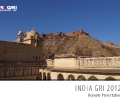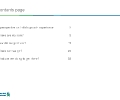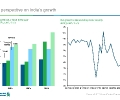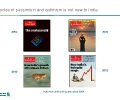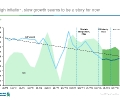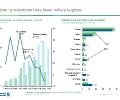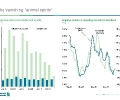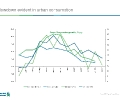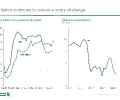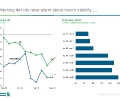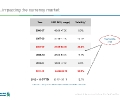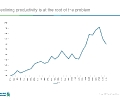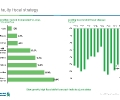NHAI plans Rs 5,000 crore tax-free bonds
October 31, 2013
By Anuradha Himatsingka, ET Bureau |

KOLKATA: National Highways Authority of India plans to launch a tax-free bonds issue to mop up about Rs 5,000 crore by December, an official said. “The process has already begun. We will soon mandate a merchant banker for the same,” Satish Chandra, member (finance) at the state-owned autonomous agency, told ET.
The highways authority, or NHAI, which is responsible for all the national highways in the country, has already notified top merchant bankers and roped in rating agencies Crisil BSE -1.14 %, Care and Brickwork Ratings India for the proposed issue. Delhi-based M V Kini & Co will be its legal advisor.The proposed issue will be subject to statutory approvals.An NHAI official said the money raised will be used for future investment needs as the agency currently has some Rs 4,000 crore of cash in its books. “We do not need funds immediately for two reasons: we still have some cash in hand and execution work on several projects — some 11-12 of them — is yet to take off due to economic slowdown,” the official said.
A person familiar with the development, however, said the highways ministry is not yet convinced about the proposed issue and has sought an explanation from NHAI. Last year, the agency had failed to issue Rs 10,000 crore of bonds, though the same was sanctioned.
Incidentally, ongoing tax-free bonds of state owned entities India Infrastructure Finance Company and Power Finance Company are yet to catch retail fancy. Both the issues are yet to achieve the retail subscription target of 40% of the overall issue size. The issues are offering a few basis points lower rate of interest in select maturities compared with the earlier ones.
Also, with a gush of issues, including those of Rural Electrification Corporation BSE -0.68 %and National Hydroelectric Power Corporation, having already hit the market, investor appetite appears to have waned.
A market analyst said that only higher rate of interest can now get retail investors back into tax-saving bonds this fiscal year.
India GRI Report 2012
November 26, 2012
WB’s proposed state highways authority to woo pvt investment
December 26, 2011
West Bengal’s proposed state highways authority will work to attract private investment in road infrastructure development, State Finance Minister Amit Mitra has said.
“With the state highways authority, West Bengal can undertake road projects on a Build-Operate-Transfer (BOT) basis,” Mitra told PTI.
The Mamata Banerjee-led government has proposed to create infrastructure through the PPP model, officials said.
A decision to set up a highways authority similar to the National Highways Authority of India (NHAI) is a step toward achieving goals in the road sector, sources said.
Mitra said, “The initial corpus for the authority has not yet been finalised and could be known when the proposal comes to the Finance Department.”
At present, the Public Works Department controls and maintains highways in the state. The state highway authority is likely to take over this role once it comes into place, officials said.
West Bengal has a total road network covering 92,023 km, of which National Highways comprise 2,578 km and state highways cover 2,393 km.
States like Jharkhand and Uttar Pradesh have already set up a state highways authority to improve their road infrastructure.
Source: business-standard.com
L&T arm signs Rs 26bn concession agreement with NHAI
June 27, 2011
The agreement with NHAI is for the four-laning of a 244-km stretch on the NH 14 between Beawar and Pindwara in Rajasthan.
Larsen & Toubro Ltd. said on Wednesday that its subsidiary L&T Infrastructure Development Projects Ltd. (L&TIDPL) has signed a Concession Agreement worth Rs. 26bn with the NHAI.
The agreement with NHAI is for the four-laning of a 244-km stretch on the NH 14 between Beawar and Pindwara in Rajasthan.
The project will be undertaken on BOT DBFO (design, built, finance and operate) basis, with a concession period of 23 years.
The estimated project cost is Rs. 26bn, and the project is scheduled to be completed within a period of 30 months.
The Concessionaire (L&T BPP Tollway Pvt. Ltd – a SPV of L&TIDPL) is entitled to collect toll from the users of the highway during the concession period on completion of the four-laning of the road.
The project corridor is one of the main evacuation routes for traffic from Kandla and Mundra ports, destined to hinterlands spread out in Northern India, extending to Rajasthan, Haryana, Delhi, Punjab and beyond.
Now that the Toll Industry has had a few years of maturity. What is the summary of expections from Toll Collection System from a concessionaire’s point of view.
May 10, 2010
(This needs an in-depth analysis on broad parameters. However I have tried to analyze few problems associated with toll roads.)
M S V Ramu
Profession – Contract Manager
Date: May 4, 2010
E-mail: [email protected]
Introduction: with a need a build good infrastructure and lack funds available to finance these Highway project government has undertaken to built highway on Public Private Partnership either toll based or annuity based.
The private developers who bids and undertake constructions of Highway on toll basis needs to implement a through pertinent “risk” management system with the help of the government to mitigate all the risks that come with development.
To understand the various consequence of “tolled” roads there needs to through study to undertaken which is not my purview at the moment. Hence I dwell over some of these consequences based my exposer these projects.
Toll based Highways:
The idea of “Toll based” highways was imported into India from experiences of others countries like Europe, Malaysia or North America. The model “Concession Agreement” was drafted by the Government to suit India needs.
The toll categories of roads are those wherein there are sufficient traffic which can be tolled by the Concessionaire and recoup the investment made him and also make profit. In the event there are not enough tollable traffic to recoup the investment made, it will be offered on annuity basis or with VGP (Viability gap funding) by the government.
The tolled based roads wherein the Government grants private developer specific rights to design, finance, construct operate and maintain the roads. The developer called “Concessionaire” develops covers the investment costs and carry commercial risks since he relays on operation revenue from the tolls remunerated. At the end of the concessional period the road reverted back to government at no extra charges. However if the estimated revenue does not materialize during Concession period the Concessionaire may have to negotiate the concession period (as in other countries) which is yet to happen in India as we are just starting!
In south America there is method of bidding known as “Least Present Value” wherein the winning bidder is the one who asks for “smallest Net Present Value” and period of the concession period ends when the present value of revenue equal to winning bid. This model has not been tried in India.
Risk management in “Toll based” Concession
In the present circumstances the Concessionaire undertakes risks to constructs road which is generally divides normally into three parts:
- Certainty – decision maker know exactly the outcome
- Uncertainty – here the decision maker does not know the risks due to non availability of any data
- Risks – are those which can be determined by statistical terms and can be analyzed but it differs from uncertainty
In risk management all the risks are quantified and analyzed and decision taken by the Concessionaire to mitigate the same by way of disciplined approach to critical situation
Developmental risk involves “Land Acquisitions” needed for the project. This is one of the biggest risk faced by the Indian developers as most of the times project gets delayed due non-availability of Land. NHAI does not meet the contractual requirements specified in the Concession agreement thereby causing unnecessary hardship to concessionaire. This risk falls under “uncertainty” which can not be quantified
Financial Risk: Soon after award of Project, the Concessionaire needs to raise the necessary capital required for execution project
There are two major risks involved:
- Ability to raise the finance and make financial close as required by the Concession agreement.
- High interest rate during the currency of concession period (due to floating interest charged by lenders) – mitigation of this risk in extremely important).
Construction risks
Whether the construction undertaken by the Concessionaire himself or by other contractor there are many risk involved
- Poor performance of the contractor
- Different site condition which normally experience contractor many not have thought off which is problematic and end up in high cost due additional items of work to be executed.
- High price escalation of all the inputs of construction – Example: steel pricing going through roof last year.
All above risk has to be born by the Concessionaire which needs proper approach in the initial stages itself
Operational risks
Operation risk involves mainly the following
State support agreement – needs to signed by the concerned state and they shall support the collection of tolls which important to the concessionaire. NHAI who are promoters of the project should take full responsibility in getting the agreement signed with Concessionaire as Concessionaire can not exert any pressure on the states
Toll Level: the estimated toll level uncertainty during pre-bidding stages can lead to inaccuracies in revenue estimation which the Concessionaire has based his bid. Hence this risk needs to shared by the NHAI
The traffic volume projected in financial model may not materialize as it completely depends on economic growth projected during pre-bidding stage
Any fall in traffic volume will automatically bring down the IRR value projected. Expert estimate that 10% drop in volume of traffic will result in reduction of 1-7% – 1.9% percent reduction in IRR.
Toll collection
The Concession agreement does give any standard specification for the installation of tolling equipment. This has resulted in haphazard manner the tolling equipment being installed by the different Concessionaire. This needs to change. For example a RFID card issued at New Delhi should also hold good down south. By such an arrangement the road user can travel effortlessly any ware in India.
The technology used by the Concessionaire needs to be streamlined on all India basis for all Concessionaire.
Toll fee: The price escalation of “toll/Fee” charged by the Concessionaire is based on all India WPI index. This is incorrect as in some states it may be very high. In my opinion there should be “Toll Regulator” on all India basis to regulate toll based on each state WPI or any other base model
HTMS: Here there is no comprehensive approach. For example the “variable message system” is limited to one project length only! This also needs an all India approach.
Suggestion: at the moment there are so many “Toll” based road are in operation and also on the horizon. All the toll based roads owners are “Special purposed vehicle” promoted by the concessionaire.
So why not a “over the counter” stock listing be arranged of these SPV and listed in Stock exchanges which can also traded in F&O section. I am sure this arrangement will automatically will mitigate many risks and also give scope for improvement in roads as the Concessionaire would like increase the traffic by enhancing the many amenities for road users.
Thanks for taking time for reading this articles.
TEXT-Fitch affirms SNBTPL ‘s bank loans at BBB-(ind)
April 19, 2010
April 16 – Fitch Ratings has today affirmed SEW-Navayuga Barwani Tollways Pvt Ltd.’s (SNBTPL) senior long-term project bank loans aggregating INR5,474m at ‘BBB-(ind)’, and subordinated bank loans of INR300m at ‘BB+(ind)’. The Outlook is Stable.
SNBTPL enjoys an 18-year concession from National Highways Authority of India [NHAI.UL] (NHAI, ‘AAA(ind)’/Stable) to design, engineer, build, finance, construct, operate and maintain on a Build, Operate and Transfer (BOT) basis an 82.8km road stretch on the National Highway 3 (NH-3) in the state of Madhya Pradesh. The estimated cost of the project is INR7.9bn, with the scheduled commercial operations date (COD) in May 2011.
The affirmations follow SNBTPL’s reasonable progress over the last year in achieving different project milestones during the critical construction phase. Fitch does note however that the company is slightly behind plans. The entire right of way (ROW) required for the project is reportedly in the company’s possession, with the exception of a three-km stretch of forest land; however, first-stage approvals have been received from the forest department.
As of March 2010, the project has received equity infusions (61.3%), and has been drawing down on term loans – 58% of senior debt and 57% of sub-debt – as per schedule.
The ratings are constrained by the residual completion risk, although a fixed-price construction contract with SEW, whose terms mirror those in the concession, offer protection. Base-case debt service coverage metrics are extremely modest and vulnerable to various deep stress tests Fitch performed. A three-year tail in the concession allows the banks to restructure the loans, if necessary. Some liquidity support is available in the form of a fully-funded debt service reserve account (DSRA), equivalent to three months’ principal and interest payment.
Fitch has factored into its rating the operational track record and financial strengths of the sponsors. This includes the credit enhancement value of their undertaking to finance the cost and time overruns, to replenish the senior and subordinated DSRA and to provide unconditional and irrevocable bank guarantees if event project cash flows are inadequate to create the DSRA. Additionally, SEW has executed a letter of undertaking to the senior to infuse INR100m, after the COD, to augment debt payment capacity and to inject additional funds in case operations and maintenance expenses exceed the base case projections submitted to the banks.
The agency believes that the road has long-term economic potential, and that its locational advantage should have a beneficial impact on tollable traffic. Also, it is situated on the highway that represents the shortest distance between Mumbai and Agra.
SNBTPL is a 74:26 JV between SEW infrastructure Ltd (SEW, ‘AA-(ind)’ / Stable) and Navayuga Engineering Constructions Ltd (NECL). Following inter-se adjustments among the sponsors, SEW has increased its equity stake in the project to 74% from the 51%, resulting in a reduction in NECL’s holding to 26%.
Applicable Criteria available on Fitch’s website at www.fitchratings.com: “Rating Criteria for Infrastructure and Project Finance”, dated September 29, 2009.
Source: in.reuters.com
New ISO specification for ETC systems
January 27, 2010
A newly published ISO Technical Specification harmonises the requirements for electronic fee collection (EFC) systems on roads subject to toll charges. It will facilitate mobility between different road networks and help to ensure reliable data collection and correct charging.
ISO/TS 12813:2009, “Electronic fee collection – Compliance check communication for autonomous systems”, will help to ensure the optimal use of on-board equipment (OBE) interfacing with satellite positioning to collect the data required for charging for the use of roads in an autonomous mode, without relying on dedicated road-side infrastructure.
The standard defines the requirements for using dedicated short range communication (DSRC) between on-board equipment and an interrogator for the purpose of checking compliance of road use with a local toll regime. This will enable checking of non-national vehicles and thus enable cross border enforcement of non-compliant vehicles.
The scope of the Electronic Fee Collection (EFC) standards relates to EFC charging systems and information exchanges over the interfaces. The standards focus on the interface between the on-board and the roadside equipment, but also deal with the ‘Information data flows between operators’. The standards primarily cover EFC systems based on Dedicated Short-Range Communication (DSRC); Cellular Network / Global Navigation Satellite Systems (CN/GNSS), and Integrated Circuit Card (ICC) technologies.
The standards suite includes not only ‘requirements’ but also associated test procedures, in order to support conformity evaluation of EFC on-board and roadside equipment. It also includes security guidelines that can be useful in the preparation or evaluation of security requirements.
ISO/TS 12813:2009, Electronic fee collection – Compliance check communication for autonomous systems, was jointly developed by ISO technical committee ISO/TC 204, Intelligent Transport systems and CEN/TC 278, Road transport and traffic telematics.
IVRCL Infra bullish on BOT road projects
January 27, 2010
IVRCL Infrastructure and Projects Ltd said it has received a Rs 1,550 crore BOT (Built Operate Transfer) road project in Madhya Pradesh from the National Highways Authority of India (NHAI). The concession will be for 25 years and the project will be completed in 30 months.
“The 155-km long road project will be executed by a special purpose vehicle owned by IVR Prime. The road construction will be taken up by IVRCL Infra,” said Mr E. Sudhir Reddy, the chairman of IVRCL Group.
“With this, IVR Prime has BOT projects — confirmed and lowest bidder — worth Rs 10,000 crore,” he said adding that the company expects to win six BOT projects by this year end.
The project, which is a part of National Highway 59, involves design, engineering, construction, development, finance, operation and maintenance of the road that runs between Indore and Ahmedabad.
Mr Reddy said that the debt-equity of 5:1 would be used to fund the project. “The equity component will be raised through internal accruals and raising debt will not be difficult for us,” Mr Reddy said.
Following the road transport and highways minister, Mr Kamal Nath’s target to build 20 km road every day by April 2010, the NHAI has put the process of awarding contracts on the fast track. “We are currently doing 9 km a day and would be in a position to scale up to 20 km a day by April-May 2010,” Mr Nath had said recently.
Recently, the government had approved road projects worth Rs 6,152 crore in five states for upgrading nearly 562 km of four-lane highways into six lanes.
Mr Nath had also coined the idea of issuing infrastructure bonds to raise money from non-resident Indians on the lines of the Resurgent India Bonds issued in 1998 and the India Millennium Bonds issued in 2000.
CCI approval for 561.89 km of highways in five states
January 11, 2010
On 9 January 2010, the Cabinet Committee on Infrastructure (CCI) approved road projects worth Rs 6,151.94 crore for upgrading nearly 561.89 km of highways in Maharashtra, Gujarat, Karnataka, Goa and Rajasthan.
The projects include expanding existing four-lane section roads into six-lanes of the Golden Quadrilateral (GQ) scheme in Maharashtra, Gujarat and Rajasthan (totalling 439.02 km). The projects include the 140.35-km Pune-Satara section on NH-4 in Maharashtra; the 56.16-km Samakhiali-Gandhidham section on NH-8A in Gujarat; and the 242.51-km Udaipur-Ahmedabad section on NH-8 in Rajasthan and Gujarat.
The GQ projects to be implemented on DBFOT basis are estimated to cost Rs 4,279.94 crore. While the concession period for the NH-4 and NH-8A projects is 24 years, the NH-8 project’s concession period is 30 years. All these projects have the construction period of 912 days.
Further, the CCI has accorded its approval for the implementation of the 122.87-km-long section of four/six-laning of Maharashtra/Goa border to Goa/Karnataka section of NH-17 in Goa on a DBFOT and BOT basis. The project cost is Rs 1,872 crore with a concession period of 23 years and construction period of 1,095 days.
Reliance Infra bags Rs 590crore Jaipur project
October 26, 2009
New Delhi: Reliance Infrastructure, the Anil Dhirubhai Ambani Group (ADAG) company, has won the Rs 590 crore Jaipur-Reengus highway project in Rajasthan from the National Highways Authority of India (NHAI).
The project is expected to be completed by 2011.
The company is currently implementing road projects worth Rs 4,500 crore and aims to increase its road portfolio more than four-fold to over Rs 20,000 crore by 2012.
Reliance Infra bagged the Rajasthan project on the basis of the lowest quote for grant at Rs 103 crore. The upgrade work of the 53 kilometre stretch will be implemented on a build operate and transfer (BOT) basis for a concession period of 18 years, including the construction period. After completion of the project, the company will earn toll through the remaining period before handing over the project to NHAI.
“Jaipur-Reengus contract is the seventh road project won by Reliance Infrastructure. With this, the company would be committing more than Rs 4,500 crore for the road sector. We are planning to increase the total road project portfolio over Rs 20,000 crore by 2012-13,” Lalit Jalan, CEO, Reliance Infrastructure, said in a statement.
The deal is likely to be signed in a month and the construction will begin soon thereafter. The group has a market capitalisation of around Rs 1,50,000 crore, and net worth of over Rs 64,000 crore. Also, the operating cash with the group is to the tune of Rs 13,000 crore.
The company’s two Tamil Nadu projects became operational last week. The projects, Namakkal-Karur and Dindigul-Samynalore, are worth Rs 763 crore and span 96 kilometres.All the remaining road projects are expected to be operational by March 2011.
Also, Reliance Infra is bullish on the infrastructure growth in the country.”Infrastructure will be a major source of revenue for us and we will bid for most of the projects being planned in the country,” Jalan said.
It is undergoing the tendering process in projects worth around Rs 50,000 crore. The company has achieved financial closure for the Rs 2,356 crore first phase of Mumbai Metro project and has also bagged the Rs 11,000 crore second phase of the project to develop a 32 kilometre stretch for a concession period of 35 years.
Source: dnaindia.com
